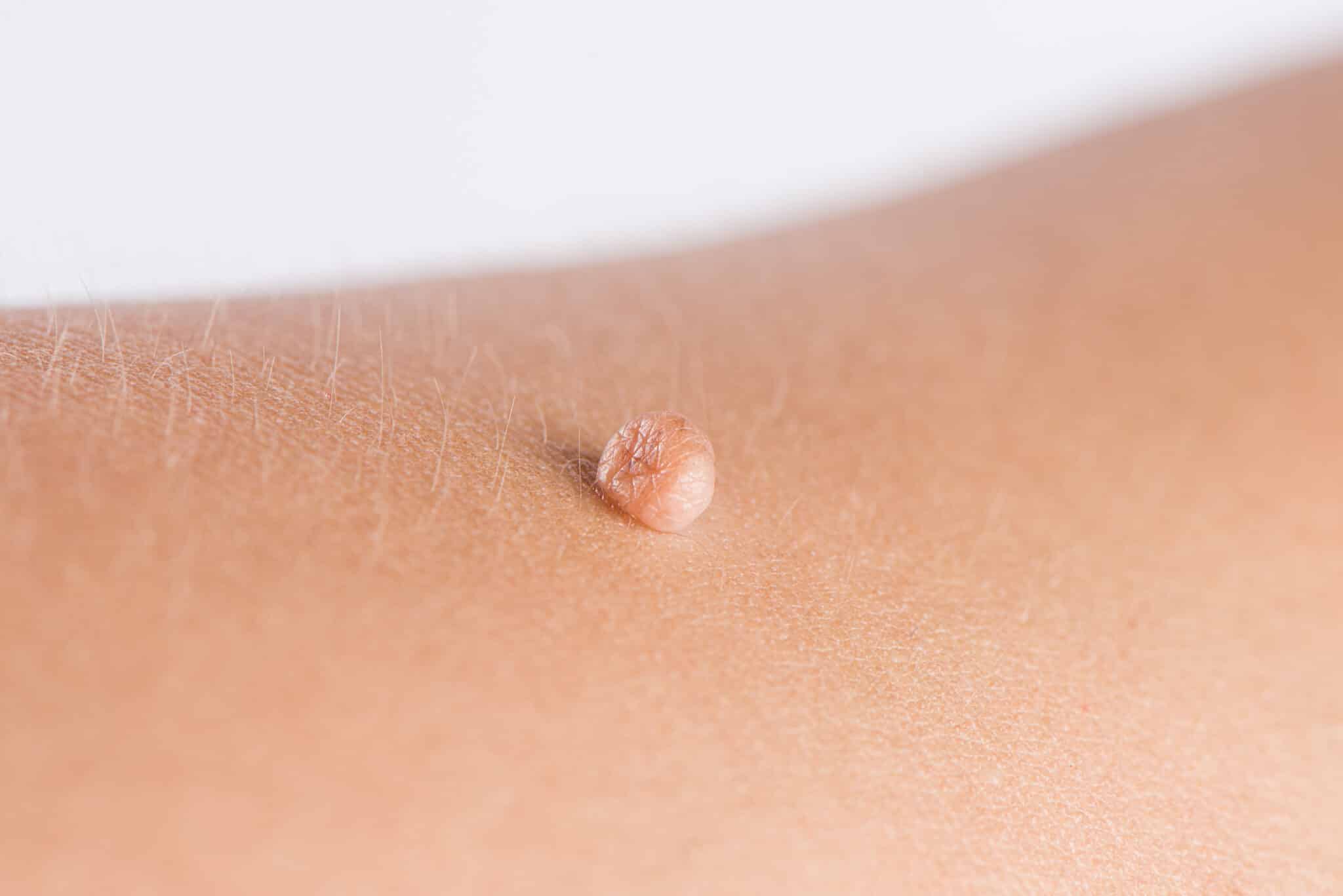
Skin tags, those small and soft growths that dangle off the skin's surface, can be a common concern for many individuals. While skin tags are generally harmless, they can be a nuisance and affect one's self-esteem, especially when they appear in visible areas.
One question that often arises is whether hormonal changes can be linked to the development of skin tags. In this article, we'll explore the connection between hormonal changes and the growth of skin tags and what removal methods you can explore.
Skin tags, medically known as acrochordons, are benign skin tumours that typically occur in areas where skin rubs against skin or clothing. They comprise a core of fibres, fat cells, nerve cells, and skin covering.
To understand how hormonal changes may contribute to the development of skin tags, we must look into the basics of cell growth and reproduction.
Hormones are pivotal in regulating various bodily functions, including cell growth and reproduction. Changes in hormone levels can influence the rate at which cells divide and replicate. An imbalance or abnormality in hormonal levels can lead to the overproduction of skin cells, which may result in the formation of skin tags.
Obese individuals with leptin and insulin resistance may have an increased risk of skin tag formation. A study found that the number and extent of skin tags increase with higher BMI. Subjects who were obese had the highest levels of leptin and insulin resistance in their bodies.
Leptin resistance is often associated with obesity, where there is an excess of fat tissue in the body. As obesity progresses, it can lead to increased insulin resistance. Heightened insulin resistance is due to excess fat tissue, which releases inflammatory substances that interfere with insulin's ability to regulate blood sugar effectively.
Oestrogen and progesterone are two primary female sex hormones but are also present in smaller quantities in males. These hormones fluctuate during various life stages, including puberty, menstruation, pregnancy, and menopause.
Changes in oestrogen and progesterone levels can affect the skin's elasticity and collagen production. Reduced elasticity can lead to skin rubbing and folding more efficiently, creating an environment conducive to skin tag formation.
Additionally, hormonal fluctuations may influence the activity of skin cells, potentially contributing to the development of skin tags.
Androgens are male sex hormones, but they are also present in females in smaller amounts. They play a role in various physiological processes, including regulating sebaceous glands and hair follicles.
In some cases, increased androgen levels can lead to the development of skin tags. The growth of skin tags is particularly relevant for women with conditions like polycystic ovary syndrome (PCOS), which is characterised by elevated androgen levels. Skin tags are more common in individuals with PCOS, highlighting the potential link between hormonal changes and skin tag formation.
Another possible contributor to skin tags is growth hormone disorder, a condition known as acromegaly.
Acromegaly is a rare condition caused by the overproduction of growth hormone (GH), usually due to a benign tumour in the pituitary gland. This condition leads to an increase in insulin-like growth factor 1 (IGF-1) levels, a hormone closely associated with GH.
Excess GH and IGF-1 can lead to hypertrophy, characterised by the enlargement or overgrowth of various tissues, including the skin. This excessive cell growth can cause skin tags to develop as the cells in the affected area multiply at a higher rate than usual.
While skin tags are generally harmless, many individuals remove them for cosmetic reasons or because they become irritated or painful due to friction.
Removing skin tags is typically straightforward and can provide relief and boost self-confidence. The following section will explore some skin tag removal methods in Singapore.

Ultrapulse CO2 laser uses quick, intense bursts of laser power to vaporise infected tissue without damaging the surrounding skin. This process effectively removes skin tags.
The skin tag is tied off at the base using a sterile thread, cutting off its blood supply, which eventually causes it to wither and fall off.
Skin tags that do not respond to other treatments may need surgery. The skin tag is cut off using surgical scissors or a scalpel, often under local anaesthesia.
High-frequency radiofrequency is strongly absorbed by water in cells causing vaporisation or coagulation depending on the waveform. It can be used to dissect out skin tags or coagulate them.
Skin tags can be bothersome, and their development is often associated with hormonal changes. Factors such as insulin resistance, fluctuations in oestrogen and progesterone levels, and increased androgen levels can contribute to the growth of skin tags.
While the methods mentioned in this article have been used to remove milia, 1Aesthetics prefers those that allow a higher degree of control and precision to completely remove the skin tag and prevent recurrence.
High-frequency radiofrequency and Ultrapulse CO2 laser treatments precisely target and vaporise affected cells while minimising damage to nearby skin, reducing the risk of scarring and recurrence.
If you decide to have your skin tags removed in Singapore, consult 1Aesthetics to discuss the best removal method for your specific situation. We specialise in safe and effective skin growth removal treatments, including warts, milia and lipoma removal, and will ensure that the procedure is performed with precision and minimal discomfort.
Book a consultation today to learn more about skin tag removal and prices.
Address:
1Aesthetics, Medical & Surgery
#14-90 The Central Tower 1
8 Eu Tong Sen Street
Singapore 059818
Mon-Fri 10 AM to 730 PM
Sat 10 AM to 6 PM
Phone / WhatsApp:
+65 66125173 / +65 84899962
Email:
[email protected]